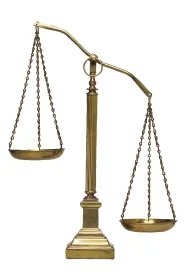This week the Coalition government announced that serving High Court Justice Susan Kiefel will replace retiring High Court Chief Justice Robert French. Justice Kiefel's appointment to the role is significant as she will be the first female chief justice in our High Court's history.
Justice Kiefel was appointed to the High Court in 2007, making her the second female member of the bench at that time. With the appointment of Justice Michelle Gordon last year, the High Court bench has increased its female membership to three out of seven members (Justice Virginia Bell being the third). It is a momentous and significant development in the push towards recognising and promoting gender equality at the upper echelons of public service. Of course, Australian women have also served as prime-minister, deputy prime-minister, governor-general and Commonwealth attorney-general.
Gender diversity in senior and leadership positions does however continue to remain an ongoing struggle. For example, the Workplace Gender Equality Agency's (WGEA) research indicates that five out of six CEOs are men and that the salary difference between genders rises to AUD93,884 at the top level of management; with men taking home the greater salaries.
Progress is being made; but at a sluggish pace. Recent years have seen a slight improvement in the gender pay gap, an increase in the number of key management personnel who are women, an increase in the number of employers with policies to support gender equality and the number of appointments of women to managerial roles.
Employers can proactively drive better workplace gender equality across their organisations on a daily basis. Measures can include:
-
implementing workplace policies which not only promote equal employment opportunity (EEO) but also support and recognise female participation including through workplace flexibility and domestic and family violence policies
-
"walking the walk" on EEO policies and appointing managers and senior leadership position based on merit
-
ensuring that other gender equality indicators are aligned with diversity values such as equal remuneration between women and men and ensuring the workplace is free of sex-based harassment and discrimination.
Industry and business led initiatives to promote workplace gender equality is essential.
With studies demonstrating diversity positively impacts an organisation's bottom line, and with Australian non-public sector employers with 100 or more employees in their corporate structure required to report to the WGEA each year, there is real incentive to "walk the walk".
At the very least, continual improvements for gender diversity will hopefully mean that one day the gender of the chief justice of the High Court won't need to be the subject of discussion at all.



 />i
/>i

